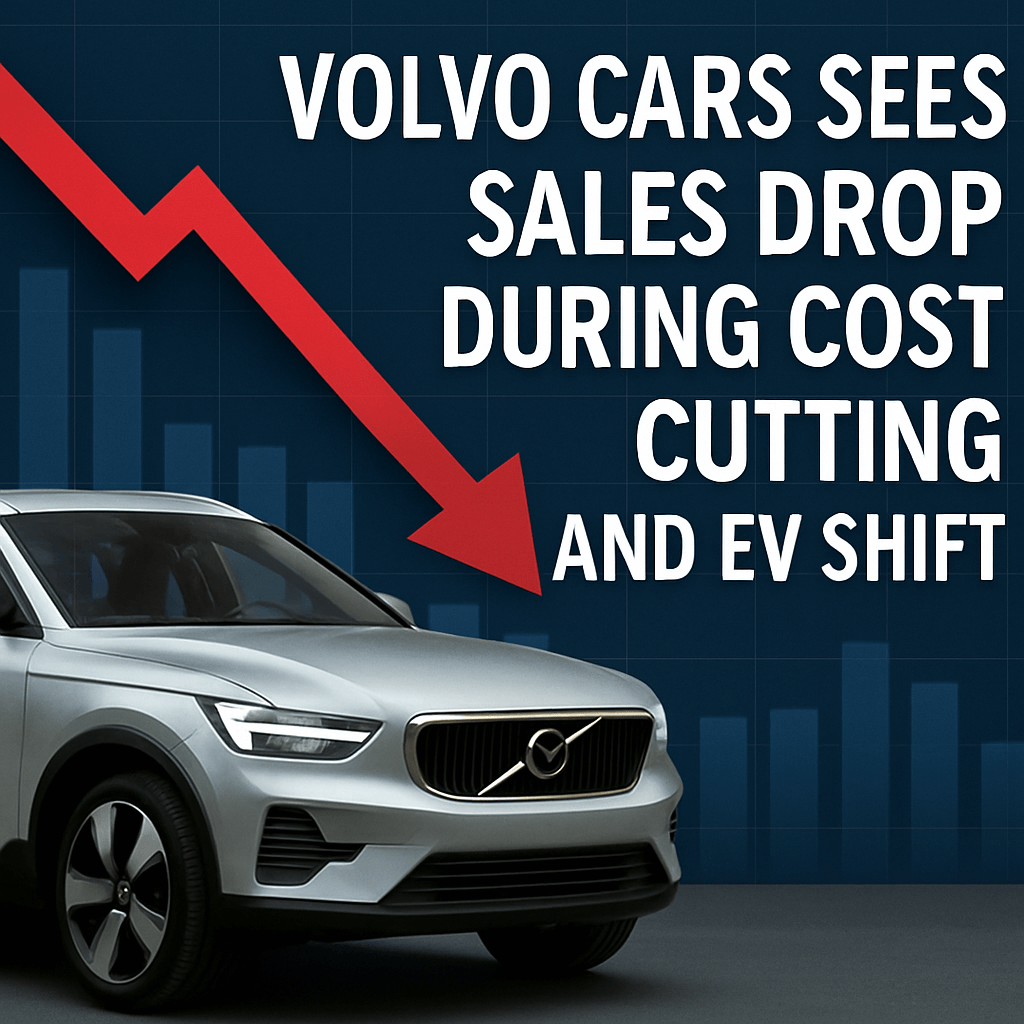Volvo Cars Sees Sales Drop During Cost-Cutting and EV Shift

In May 2025, Volvo Cars disclosed a total of 59,822 car sales globally, marking a 12% decrease compared to the same month in the prior year, 2024. Analysts attribute this decline to challenges posed by recently implemented automotive tariffs in the United States, which have added financial strain on the company’s operations.
Shift Towards Electrified Models
Currently, electrified vehicles—encompassing both plug-in hybrids and fully electric options—comprise a noteworthy 44% of Volvo’s total sales in May. This represents a significant decline from 66% in May 2024. Breaking this down further, fully electric vehicles accounted for 21% of May’s sales, while plug-in hybrids made up 23%. The decrease in the share of electrified models is attributed to various factors, including market volatility and consumer demand shifting amid economic uncertainties.
Top-Selling Models Analysis
The XC60 emerged as Volvo’s best-selling model in May, with 19,408 units sold, slightly down from 20,507 in May 2024. Following closely, the XC40/EX40 model secured second place with 14,892 units sold, reflecting an increase from 13,640 the previous year. Conversely, the XC90, which sold 8,794 units in May 2025, saw a minor decline from 9,072 units in May 2024. This trend indicates shifting consumer preferences, requiring Volvo to recalibrate its production strategy.
Workforce Optimization and Cost-Cutting Initiatives
In response to broader market challenges, Volvo Cars has initiated an aggressive cost-reduction program, which includes a significant workforce reduction of 3,000 positions. This move is expected to yield savings of approximately SEK 18 billion (€1.6 billion). The layoffs will predominantly affect white-collar roles, particularly within their Swedish headquarters, accounting for about 15% of the total office-based workforce. Of the total layoffs, 1,000 are expected to be consulting positions, a reflection of the company’s shift towards more in-house operations.
Volvo Cars stated, “These structural changes are necessary for Volvo Cars to deliver on its long-term strategy, strengthening its foundations for profitable growth.” The company remains committed to its long-term goal of transitioning to a fully electric vehicle lineup by the end of the decade, despite external market pressures and evolving tariff situations.
Impacts of Tariffs and Material Costs
Beyond tariffs on EVs, additional factors also contribute to the challenges facing Volvo and other automotive manufacturers in Europe. The region has seen a slowdown in overall sales, compounded by increasing material costs. Key raw materials, including lithium and cobalt—critical for battery production—have surged in price, significantly impacting profitability. Major competitors in the market, including Nissan, Ford, General Motors, Volkswagen, Tesla, and Stellantis, have reported similar job cuts and production slowdowns, aiming to enhance efficiency and adaptability in an uncertain economic landscape.
The European Market Landscape
The European automotive market is currently at a crossroads, grappling with economic pressures and a demand for sustainable vehicles. Experts predict that manufacturers will need to invest more in research and development to innovate, reduce costs, and fulfill increasingly strict environmental regulations. The recent commitment by the European Union to reduce greenhouse gas emissions poses additional challenges and opportunities for automakers.
Conclusion
As Volvo Cars navigates these transitional waters of market challenges and evolving consumer preferences, the emphasis on efficiency and strategic realignment will be crucial for its long-term sustainability. The company’s ability to adapt its workforce and maintain a strong product lineup focused on electrification could be pivotal in overcoming current adversities and capitalizing on future opportunities.